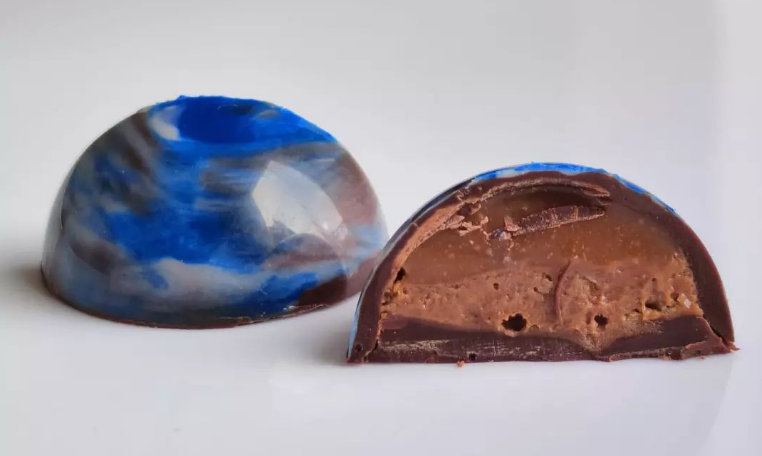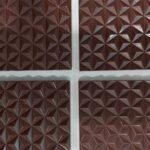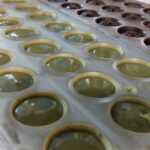It's getting warm and your chocolate bonbons are starting to sweat! We all know that chocolate starts melting around 30 degrees - as you might have been able to attest after picking up a chocolate bonbon and watching it melt all over your fingers.
Although we always recommend storing chocolate out of the fridge, preferably in a dark closet, the fact remains that after a certain temperature your chocolate does become liquid. Not only does this affect shelf life, but it also alters its appearance and structure. Our bonbons weren't designed to eat with a spoon!
We'll take a look at the best way to store chocolate in summer, and what to consider before storing in the fridge. Sounds too complicated? There's always the option of just scarfing the chocolates back instead of storing them!

Why shouldn't you keep chocolate in the fridge?
Chocolate has two archenemies: temperature changes and humidity. Putting chocolate in the fridge means changing the temperature, and subjecting it to another temperature change when you take it out again. Most refrigerators are also quite humid, due to their cold temperature and other items in the fridge.
Some changes you may notice if you put chocolate in the fridge include:
- Texture changes: Your chocolate bonbon may be harder immediately after coming out of the fridge, but after coming back to room temperature it risks taking on a mushy texture. Fillings like caramel are also delicate and may be subject to texture changes.
- White marks: Putting chocolate in the fridge can also cause white marks to appear on the surface. These are caused by sugars and fats from the chocolate moving to the surface, which often happens with humidity.
- Loss of shine: Los bombones brillan gracias a la manteca de cacao, una grasa presente en el haba de cacao y uno de los ingredientes principales del chocolate. La manteca de cacao es muy delicada y puede asumir varias formas dependiendo de cómo la tratamos. Los chocolateros saben cómo manipularla para formar una estructura de cristales que brilla, pero con demasiado calor, frio o humedad, esta estructura se pierde.
- Strange taste: Since it has a large proportion of fat, chocolate is susceptible to absorbing odours. Putting it in the fridge without properly wrapping it means it may take on the aromas of other things in the fridge: onions, tomato soup, lettuce...
So, when can I keep chocolate in the fridge?
The optimal temperature for conserving chocolates is up to 20 degrees Celsius. Cocoa butter starts to lose its shine around 23 degrees, and above 27 degrees your chocolate will take on a noticeably soft and melty texture.
If you plan to eat your chocolates soon and you're not too fussed about the shine, it's ok to leave them out of the fridge for a few days. Just keep in mind that this will affect the shelf life, and if they're meant as a gift, they won't look as nice.
At Danielle Pacheco Chocolatier we store our bonbons in a wine fridge (with no wine). The fridge is set between 14 and 16 degrees Celsius and contains a small, open bowl of baking soda to absorb humidity. For deliveries, we use a thick isothermic bag, wrap the chocolate box in a clean kitchen towel and add a few reusable ice blocks to the bag. This keeps the chocolates at approximately 15 degrees.
How should I store my chocolate in summer?
The ideal place to keep your chocolate is inside an airtight container in a wine fridge. If you don't have a wine fridge, you can also keep it in a regular fridge, but you may not get the same results.
Be sure to protect your chocolate using a sealed container, preferably one that leaves little room for air around the bonbons. The goal is to slow down the temperature changes to prevent condensation from forming. You may also consider wrapping the box in extra layers of tinfoil or clean cloths.
Storing the chocolate inside a box helps encourage any condensation to form outside the box instead of directly on the bonbons.
If you're looking to keep the chocolates for many weeks or months, you can also freeze them. We recommend first putting them for 24 hours in the fridge, and then the freezer. When you take them out of the freezer, follow the same process: first move them to the fridge for 24 hours, then to room temperature for 24 hours without taking them out of the box. This process helps protect against temperature shocks.
Of course, we always recommend enjoying your chocolates at room temperature, between 18 and 20 degrees. The chocolate will melt in your mouth and the flavours will be more complex than if you eat them straight out of the fridge.
Why are there white marks on my chocolate?
Chocolate can get white marks from sugar or fat - it's very rare for pure chocolate to get mouldy, as it has a high sugar and fat content and virtually no moisture. The so-called sugar and fat bloom don't affect the taste or the shelf life of the chocolate. They are safe to eat, although they may alter the texture and the appearance.
You might have noticed white marks from fat bloom when buying chocolate bars that have sat in a warm warehouse before being sold in an air-conditioned store. You can recognize fat bloom because it melts and disappears when you touch it, as a result of the cocoa butter crystals reorganizing.
By contrast, sugar bloom usually appears due to humidity. Water attracts sugar crystals to the surface of the chocolate, where they reorganize and form white marks. Humid environments and temperature changes are the usual culprits of sugar bloom, and storing chocolates in the fridge unites both these conditions.



